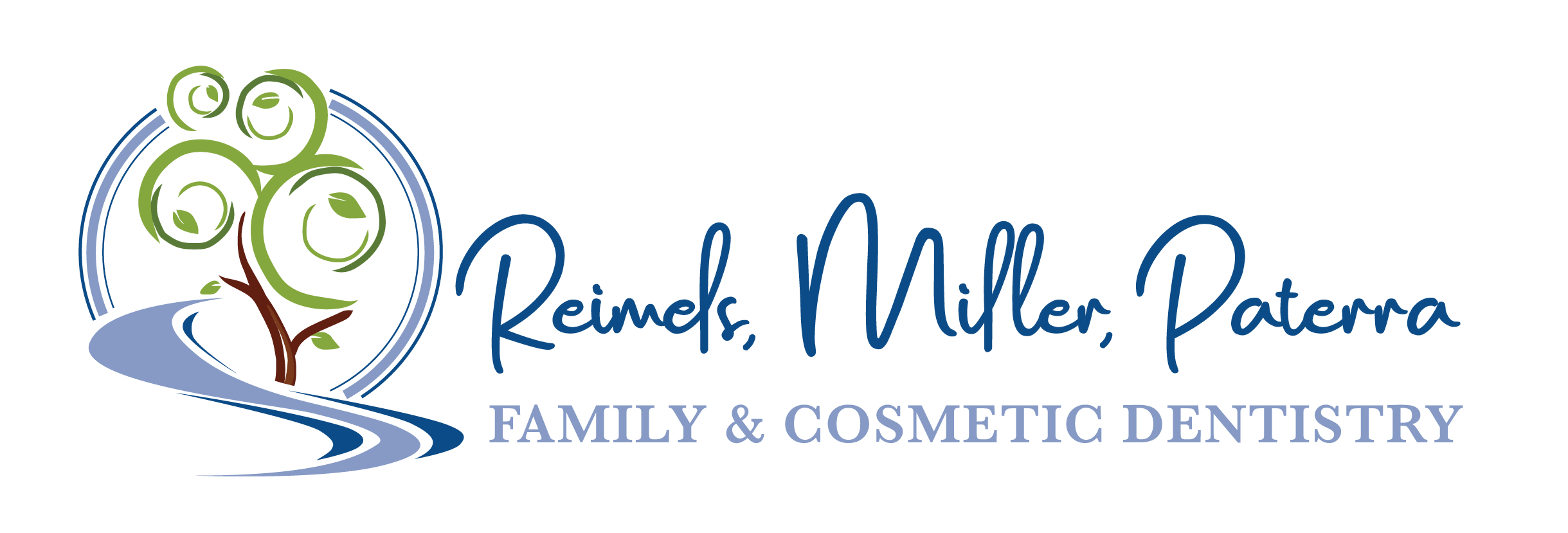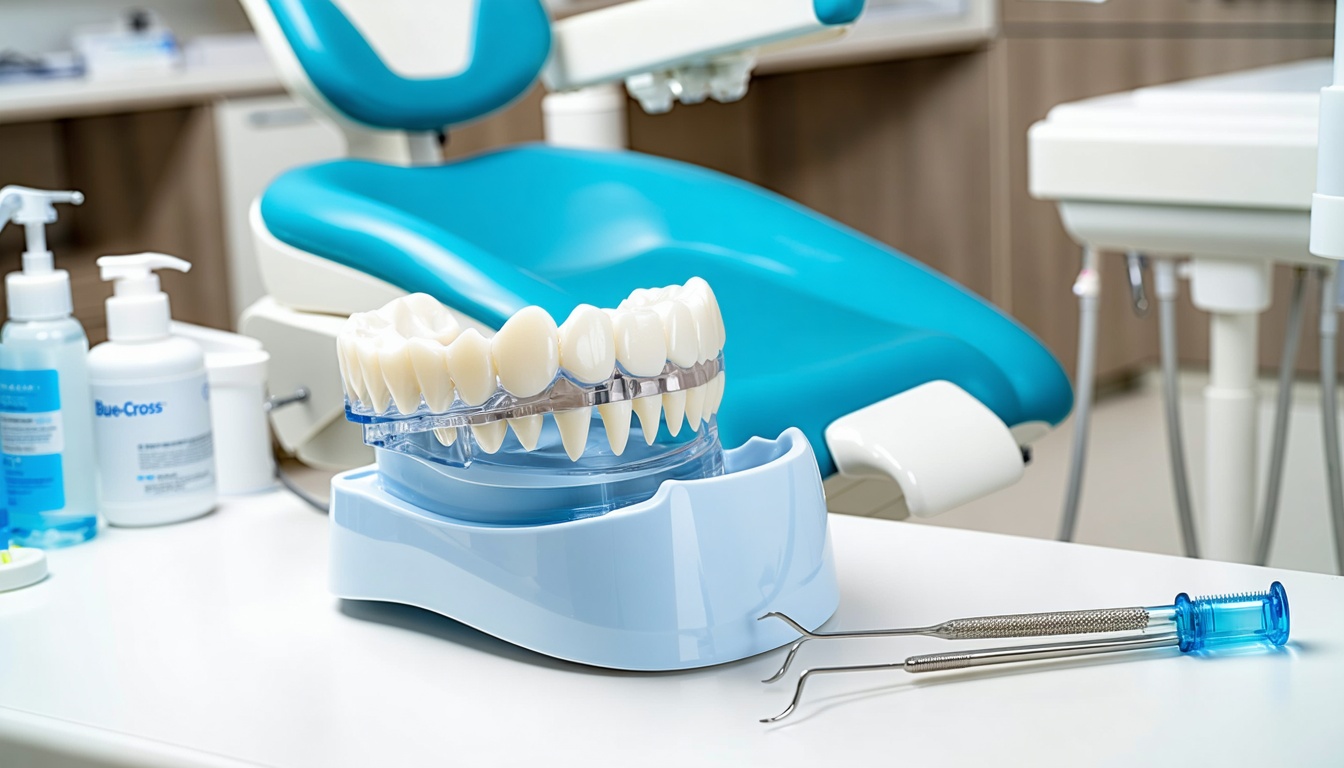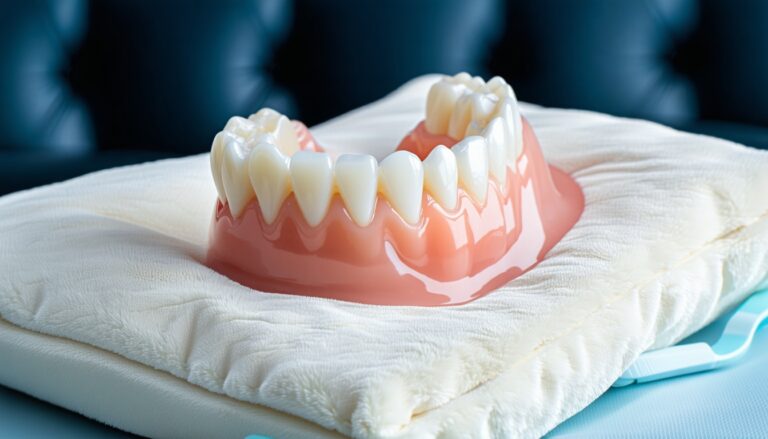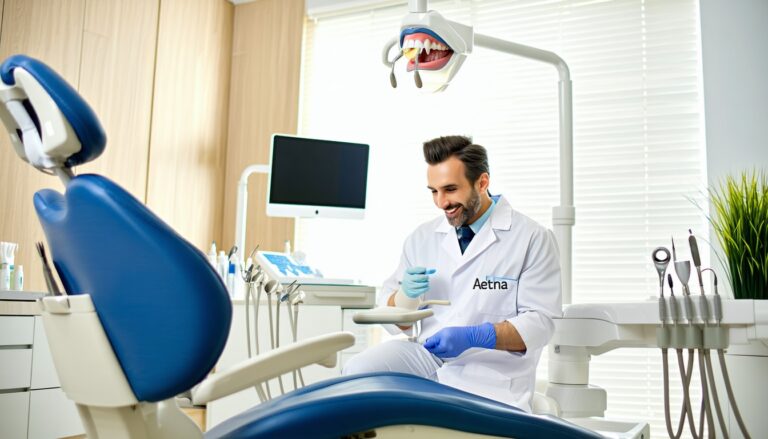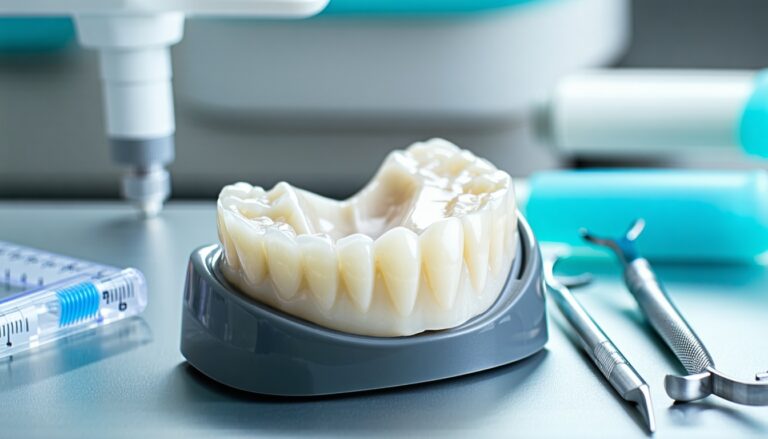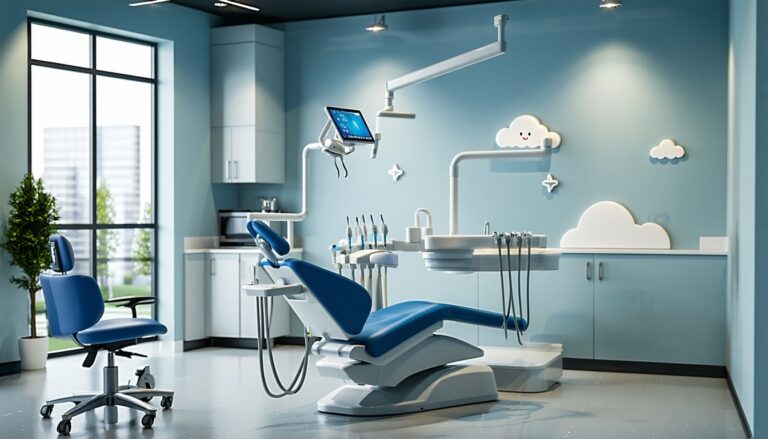Advanced Dental Services Overview
For those seeking comprehensive dental care in Huntersville, NC, advanced dental services offer a range of elite offerings and comprehensive care options. This ensures that your aesthetic, restorative, and health needs are met with precision and care.
Elite Dental Offerings
In Huntersville, elite dental offerings cater to individuals who prioritize longevity, aesthetics, and health in their oral care. The modern approaches utilized by these top-tier dental practices include:
- Implants: Dental implants provide a long-term solution for missing teeth, offering durability and a natural appearance.
- Veneers: Veneers enhance the aesthetics of your smile by correcting imperfections like chips, gaps, and discoloration.
- Root Canals: This procedure saves severely infected teeth, preserving both the tooth and overall oral health.
- TMJ/Sleep Apnea Treatments: For conditions like TMD and sleep apnea, custom solutions such as the blue cross oral device for sleep apnea treatment are available.
| Service | Description | Benefit |
|---|---|---|
| Implants | Long-term solution for missing teeth | Durability, natural appearance |
| Veneers | Corrects chips, gaps, and discoloration | Enhanced smile aesthetics |
| Root Canals | Save severely infected teeth | Preserves oral health |
| TMJ/Sleep Apnea Treatments | Custom oral appliances | Improved health and quality of life |
Comprehensive Care Options
Comprehensive care options go beyond individual treatments to provide holistic dental solutions, ensuring every aspect of your dental health is addressed. These include:
- Preventive Care: Routine cleanings, exams, and X-rays to maintain oral health and prevent issues.
- Cosmetic Dentistry: Enhancements such as teeth whitening and cosmetic bonding to improve the appearance of your smile.
- Restorative Dentistry: Services like fillings, crowns, and bridges that repair and restore damaged or decayed teeth.
- Orthodontics: Solutions like braces and Invisalign to correct misalignment and improve bite function.
To ensure your treatments are covered, practices often work with comprehensive dental insurance plans such as BCBS, MetLife, and others. For more detailed information, visit our articles on:
- tmd therapy with blue cross blue shield insurance
- bcbs dentist for tmj treatment
- custom night guard for tmd covered by delta dental
| Service | Description | Benefit |
|---|---|---|
| Preventive Care | Cleanings, exams, X-rays | Maintains oral health |
| Cosmetic Dentistry | Teeth whitening, bonding | Improved appearance |
| Restorative Dentistry | Fillings, crowns, bridges | Repairs and restores |
| Orthodontics | Braces, Invisalign | Corrects alignment |
For affluent professionals, executives, and retirees in Huntersville, these advanced dental services provide the ideal solutions for maintaining a healthy, beautiful smile while enjoying top-notch, personalized care.
Innovative Sleep Apnea Solutions
Innovative oral devices offer promising solutions for those dealing with obstructive sleep apnea (OSA). Two of the most common devices are Mandibular Advancement Devices (MADs) and Tongue-Stabilizing Devices (TSDs).
Mandibular Advancement Devices (MADs)
Mandibular Advancement Devices (MADs) are the most common type of oral appliance used in sleep apnea treatment. These devices function by pulling your lower jaw (mandible) forward, creating more space for airflow in the back of your throat Cleveland Clinic.
Advantages of MADs:
- Effective: Particularly in treating mild to moderate OSA.
- Custom Fit: High patient satisfaction due to superior retention and fit.
- Alternative to CPAP: A suitable option for individuals who cannot tolerate CPAP machines.
| Device Type | Effectiveness | Key Feature |
|---|---|---|
| MADs | High | Forward positioning of lower jaw |
For more about the custom options and effectiveness, see custom night guard for TMD covered by Delta Dental and insurance coverage for sleep apnea oral devices.
Tongue-Stabilizing Devices (TSDs)
Tongue-Stabilizing Devices (TSDs), also known as tongue-retaining devices, treat sleep apnea by pulling the tongue forward using suction. This movement opens the airway by shifting the base of the tongue forward. TSDs are an option for those who can’t use MADs due to weak teeth or other preferences (Cleveland Clinic).
Advantages of TSDs:
- Non-Invasive: Comfortable for patients with dental issues.
- Effective: Known to be effective in keeping the airway open.
| Device Type | Effectiveness | Key Feature |
|---|---|---|
| TSDs | Moderate | Forward positioning of the tongue |
For further reading on combined sleep apnea treatments, visit oral appliance therapy for sleep apnea with insurance and sleep-disordered breathing dental treatment with coverage.
Both MADs and TSDs are effective solutions for managing sleep apnea, especially for those who prefer alternatives to CPAP machines. When considering these devices, it’s essential to consult with a specialized dentist to determine the most suitable option for your needs. Explore BCBS-approved dental appliances for sleep apnea for those looking into insurance-covered options.
Custom Oral Appliances for Sleep Apnea
When it comes to managing obstructive sleep apnea (OSA), custom oral appliances stand out as a superior treatment option. They provide tailored solutions to meet the specific needs of each patient, making them highly effective for long-term use.
Effectiveness of Custom Oral Appliances
Custom-made oral appliances are the gold standard for treating OSA due to their superior fit, comfort, and effectiveness. Tailored to your mouth structure, these devices offer better retention and are preferred by patients over generic options (Cleveland Clinic). Studies have shown that custom-made titratable oral appliances can significantly reduce the severity of sleep apnea and are better tolerated by patients (NCBI).
| Criteria | Custom Oral Appliances | Over-the-Counter Devices |
|---|---|---|
| Fit | Superior | Standard |
| Comfort | High | Variable |
| Effectiveness | High | Low |
| Patient Preference | High | Low |
For expert insight on combining oral appliances with other treatments, check out our guide on oral appliance therapy for sleep apnea with insurance.
Over-the-Counter vs. Custom Options
Over-the-counter (OTC) devices, like “boil and bite” models, are readily available and generally less expensive. However, they lack the individualized customization that allows for optimal fit and effectiveness. While OTC options can provide some relief, they are not recommended as the primary treatment for OSA due to their limited efficacy.
Custom oral appliances, on the other hand, are designed specifically for your dental anatomy. They provide better comfort and higher retention rates, which contributes to increased patient adherence and overall treatment success (NCBI).
Here’s a comparative look at the features between custom and OTC devices:
| Feature | Custom Oral Appliance | Over-the-Counter Device |
|---|---|---|
| Custom Fit | Yes | No |
| Effectiveness | High | Low |
| Comfort | High | Variable |
| Cost | Higher | Lower |
| Retention | Superior | Poor |
| Patient Satisfaction | High | Variable |
For more information about coverage options, visit our page on coverage for mild sleep apnea oral devices.
Investing in a custom-made oral appliance ensures a more reliable and comfortable solution to treat sleep apnea, especially for those seeking quality care through providers like Blue Cross Blue Shield. For tailored recommendations, consider consulting with a sleep apnea dental specialist with BCBS to explore your individualized treatment options.
Combining Treatment Approaches
When dealing with sleep apnea, you might find that combining different treatment approaches yields the best results. Specifically, combining oral appliances and CPAP therapy can offer flexibility and enhance your treatment efficacy. Here’s an in-depth look at how these combinations might work for you.
Oral Appliances and CPAP Therapy
Oral appliances for obstructive sleep apnea (OSA) and CPAP (Continuous Positive Airway Pressure) machines are two effective treatments, with each having its own benefits. Combining these two treatments can provide you with a comprehensive approach for managing your condition.
Studies suggest that both CPAP and Oral Appliance Therapy (OAT) have similar positive effects on health-related quality of life measures, daytime sleepiness, and other treatment outcomes (NCBI). Despite CPAP being better at reducing the Apnea-Hypopnea Index (AHI), oral appliances can be more comfortable and better tolerated. This superior comfort and fit often lead to better patient adherence.
Combining OAT with CPAP can be especially useful if you:
- Experience discomfort from CPAP masks.
- Have mild to moderate OSA and cannot use a CPAP machine.
- Seek a flexible treatment plan that allows for alternating between devices depending on the situation (Cleveland Clinic).
The table below outlines the comparative benefits:
| Feature | Oral Appliance Therapy | CPAP Therapy | Combination |
|---|---|---|---|
| Comfort | High | Moderate to Low | High |
| Efficacy (AHI Reduction) | Moderate | High | High |
| Adherence | High | Moderate | High |
| Flexibility | High | Low | High |
| Cost | Moderate | High | High |
Flexibility in Sleep Apnea Treatment
Flexibility in your treatment plan is essential for long-term adherence and efficacy. Combining oral appliances with CPAP therapy allows you to tailor your treatment to fit your lifestyle and comfort needs. Custom-made titratable OAT devices are particularly effective and preferred due to their superior retention and fit.
For example:
- Traveling: You might prefer a compact oral appliance over the bulkiness of a CPAP machine.
- Home Use: A CPAP machine can remain your primary treatment, with an oral appliance serving as an alternative on nights when using CPAP is uncomfortable.
If you are considering combining these treatments, consult with your healthcare provider to develop a customized plan. The American Academy of Sleep Medicine and other professional guidelines support the use of oral appliances for individuals who find CPAP intolerable or prefer an alternative.
For more detailed information, check out our articles on oral appliance therapy for sleep apnea with insurance and insurance that covers mandibular advancement device.
Understanding the flexibility in treatment approaches can significantly improve your quality of life while managing sleep apnea. To learn more about combining treatments and finding the best oral appliance for your needs, explore our section on custom sleep apnea mouthpiece with insurance.
Adapting to Oral Appliance Therapy
Oral appliance therapy (OAT) for obstructive sleep apnea (OSA) can be an effective solution for those who cannot tolerate CPAP machines. Understanding the adjustment period and managing potential side effects is crucial for patient adherence to OAT.
Adjustment Period Expectations
Adapting to OAT typically takes about two to four weeks (Cleveland Clinic). During the initial phase, you might experience mild discomfort or side effects. However, as you become accustomed to wearing the oral appliance, these symptoms usually improve. Consistency in usage is key to ensuring effective treatment and minimizing disruptions to your sleep.
| Time Period | Typical Adjustments and Improvements |
|---|---|
| First Week | Initial discomfort, increased salivation, potential minor soreness |
| Second Week | Reduced discomfort, better adaptation to wearing the device overnight |
| Third to Fourth Week | Significant improvement in comfort, symptom management for OSA |
Managing Side Effects
While adjusting to your oral appliance, you may encounter some side effects. Proper management of these side effects can enhance your experience and improve long-term adherence to the treatment (NCBI).
Common side effects and their management strategies include:
- Increased Salivation: This is a typical initial response. Keeping a towel nearby can be helpful. Over time, salivation usually decreases as your body adapts to the appliance.
- Jaw Discomfort: Some may experience minor jaw discomfort or soreness. Gentle jaw exercises before and after using the device can alleviate soreness. If pain persists, consult your dentist.
- Teeth Shifting: Regular dental check-ups can monitor any unwanted teeth movement. Customizing and adjusting the appliance can mitigate this issue.
- Dry Mouth: Use a humidifier in your bedroom or stay hydrated. Dry mouth can also be managed with oral moisturizers or sprays recommended by your dentist.
For additional tips on managing side effects, visit our article on oral appliance therapy for sleep apnea with insurance.
Combining OAT with other treatments, such as CPAP, can provide flexibility in managing OSA (Cleveland Clinic). Regular follow-ups with your dentist will ensure that the appliance remains effective and comfortable. Explore more about tmd pain management with insurance to understand the broader implications of your treatment.
Professional Recommendations and Guidelines
Advancements in OSA Treatments
Obstructive Sleep Apnea (OSA) treatment has seen significant advancements, particularly in the realm of oral appliance therapy (OAT). Custom-made oral devices have emerged as the most effective solution for managing OSA patients. According to a study by the NCBI, custom-made titratable OAT devices significantly outperform over-the-counter options due to their superior fit, retention, and overall patient preference.
The American Academy of Sleep Medicine (AASM) and the American Academy of Dental Sleep Medicine (AADSM) have both recommended OAT as a primary treatment option for adult OSA patients who find CPAP therapy intolerable or express a preference for OAT. This recommendation emphasizes the tailored approach of custom or semi-custom devices for effective management of sleep apnea.
In clinical practice, both CPAP and OAT show similar improvements in health-related quality of life, daytime sleepiness, and other outcomes, although CPAP may slightly edge out in reducing the apnoea-hypopnoea index (AHI). However, the better patient adherence observed with OAT suggests a significant advantage in long-term management and overall treatment success (NCBI).
Patient Adherence to OAT
Patient adherence is critical to the success of any OSA treatment. Studies indicate that OAT shows higher adherence rates compared to CPAP therapy due to factors such as comfort, ease of use, and minimal invasiveness. This is particularly important for affluent professionals, executives, and retirees in Huntersville who prioritize efficient and effective health management.
| Treatment Device | Adherence Rate (%) | Health-Related Quality of Life Improvements |
|---|---|---|
| CPAP | 50-70 | High |
| OAT | 80-90 | High |
Given the higher adherence rates and comparable clinical efficacy, many patients prefer OAT for its convenience and better adaptability to daily life. The recommendations advocate for a customized approach, ensuring the oral devices are tailored to fit each individual’s dental structure and needs.
Patients considering OAT should consult with providers experienced in advanced dental services like those offered by providers such as Blue Cross Blue Shield. For those in Huntersville, selecting an insurance-approved practice to manage sleep apnea consistently, with state-of-the-art technology and a comprehensive care approach, is advisable. For further reading, explore our insights on oral appliance therapy for sleep apnea with insurance, insurance-approved dental appliance for sleep apnea, and metlife dental appliance for sleep apnea.
- oral appliance therapy for sleep apnea with insurance
- blue cross oral device for sleep apnea treatment
- custom night guard for tmd covered by delta dental
- aetna in-network sleep apnea dentist
